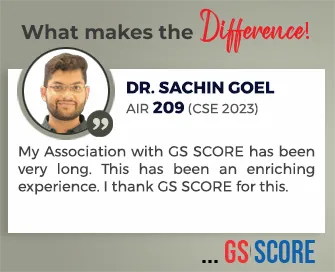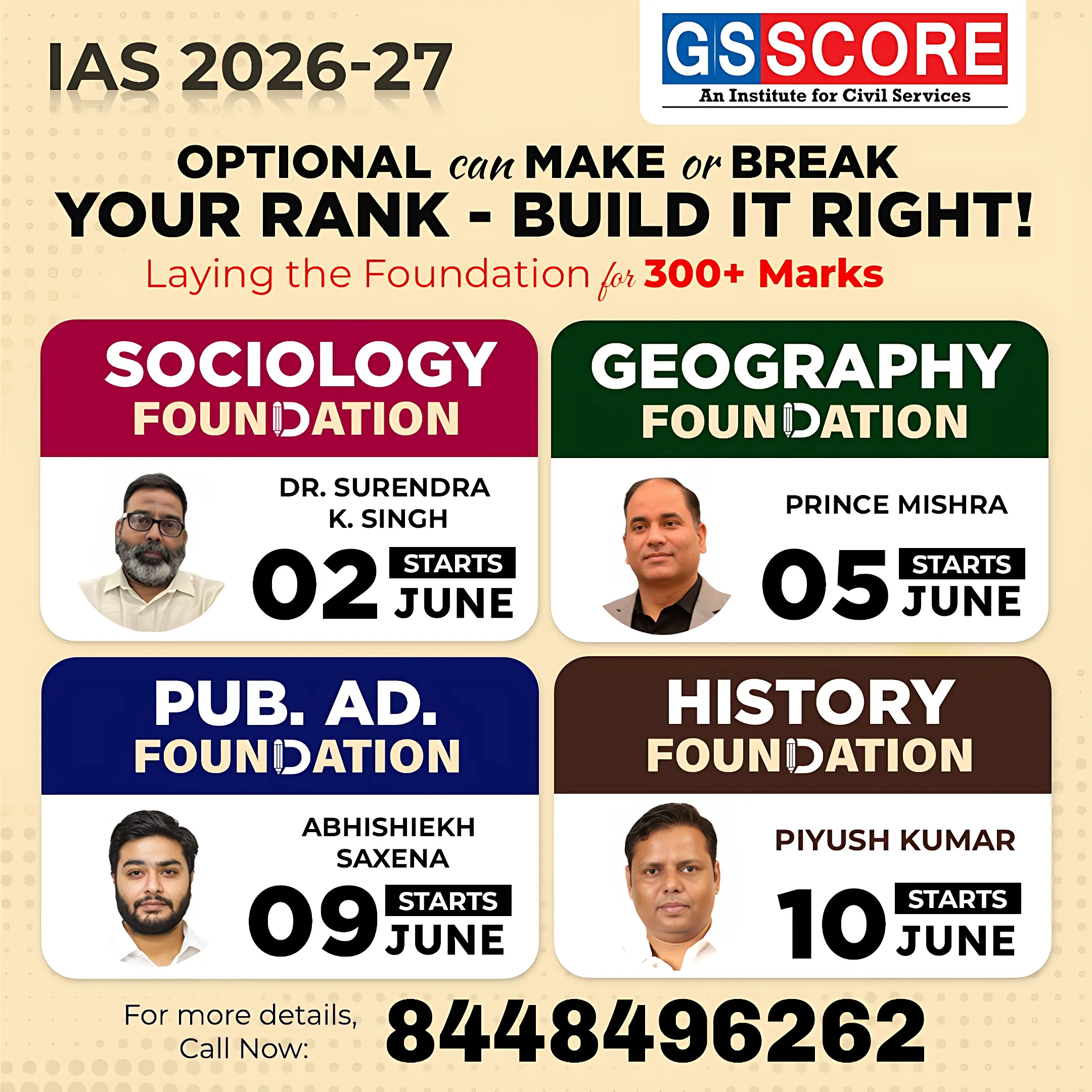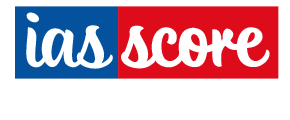


Instruction:
- Attempt One question out of the given two.
- The test carries 15 marks.
- Write Your answer in 150 words.
- Any page left blank in the answer-book must be crossed out clearly.
- Evaluated Copy will be re-uploaded on the same thread after 2 days of uploading the copy.
- Discussion of the question and one to one answer improvement session of evaluated copies will be conducted through Google Meet with concerned faculty. You will be informed via mail or SMS for the discussion.
Question #1. Non-fungible Tokens (NFTs) are often called “Digital Birth Certificates”. Explain the functioning of NFT. Also, list some of the advantages and risks involved in widespread use of NFTs.
Question #2.“Genetic scissors have taken the life sciences into a new epoch.” In this light discuss the CRISPR gene editing technology and the concerns raised by it.
(Examiner will pay special attention to the candidate's grasp of his/her material, its relevance to the subject chosen, and to his/ her ability to think constructively and to present his/her ideas concisely, logically and effectively).
STEPS & INSTRUCTIONS for uploading the answers
Step 1 - The Question for the day is provided below these instructions. It will be available at 7:00 AM.
Step 2 - Uploading of Answers : Write the answer in A4 Sheet leaving proper margins for comments and feedback and upload the PDF in MY ACCOUNT section. Click on the option of SUBMIT COPY to upload the PDF.
Step 3 - Deadline for Uploading Answers: The students shall upload their answers by 7:00 PM in the evening same day. The first 50 copies will be evaluated.
Step 4 - Feedback : Mentors will give their feedback for the answers uploaded. For more personalised feedback, join our telegram channel by clicking on the link https://t.me/mains_answer_writing_cse . A one-to-one session will be conducted with the faculty after copy evaluation in 72 Hrs.
Model Answer
Question #1. Non-fungible Tokens (NFTs) are often called “Digital Birth Certificates”. Explain the functioning of NFT. Also, list some of the advantages and risks involved in widespread use of NFTs.
APPROACH
- Theme of the question is Non-fungible Tokens (NFTs) so explain holistically the concept of NFT.
- The tone of question is inquisitive so throw light on why NFT are called “Digital Birth Certificates” and what does it mean.
- The major demand of the question is how NFTs function to explain the technologies involved in its creation, transmission and storage.
- Elaborate on various advantages that NFT provides but they still require regulatory framework, adequate awareness and other measures.
- Conclude with a balanced approach and suggestions on how NFTs can be put to use by the wider population of the nation.
Hints:
Non-fungible Tokens (NFT) are a type of data that is held in a digital ledger (locker) and can be sold and traded. They are based on blockchain technology. Each NFT has a different underlying digital asset that demonstrates ownership, and the unit data represents a digital file ie. photos, movies, and audio. NFTs are a major word these days, with sales recently reaching USD 25 billion (2021) and crypto-assets gaining massive popularity; similarly, Taiwan puppeteers are looking towards NFTs to keep their craft alive.
The mechanism of NFT is as follows:
- Artist creates the product & then the Artist retains copyright & Right to reproduce.
- Artist opens Crypto currency wallet to indulge in transaction
- After this, the Digital object is minted and assigned a unique Digital Token (NFT). It attaches historical ownership data with it.
- The product is then listed on the marketplace for sale.
- Buyer purchases the NFT with crypto currency & now the buyer owns the NFT is the Digital Art.
Benefits of Non-Tangible Tokens are:
- Exclusive ownership rights: NFTs can only have one owner at any given moment.
- Digital Signature: NFT owners can also digitally sign their artwork;
- Option to save unique information: Unique information can be integrated into their NFT's metadata, which is only viewed by the person who purchased the NFT.
- New Platform: Blockchain technology and NFTs provide a unique possibility for artists and content providers to monetise their work. Artists, for example, are no longer reliant on galleries or auctions. Instead, the artist can sell it as an NFT directly to the customer.
- Complete ownership: NFT allows users complete ownership of a digital asset that no one, even the marketplace owner, may change or modify.
- Monetizing opportunities: NFTs provide artists and content creators with a unique opportunity to monetise their work by allowing them to sell their work directly to consumers.
- Royalties: Artists can encode royalties into their work so that they receive a percentage of revenues anytime their work is sold to a new owner.
- However, there are some risks associated with digital asset copying:
- NFT frauds, the emergence of fraudulent marketplaces, and unauthentic vendors posing as legitimate artists and selling copies of their artworks at lower prices are all risks/challenges with NFT.
- Growing sharing potential phishing URLs during the sale in order to deplete the participants' crypto currency wallets.
- Hacking the NFT collections through cyberspace. The trading platforms and exchanges where NFT transactions or exchanges take place aren't totally safe.
- Environment: determining if assets based on blockchain, such as NFTs, are sustainable is tough. Validation of transactions necessitates crypto mining, which necessitates high-powered computers that operate at a rapid rate, causing environmental damage.
- Other difficulties include: technology concerns such as non-attachment of a purchased item to the NFT, global chip shortages, and ownership issues such as forgetting the login credential, which could result in the irreversible loss of owned works. Furthermore, the true benefit of NFT has yet to be realised.
Conclusion:
NFTs are a step ahead in the reinvention of this infrastructure since they enable digital representations of physical assets. However, some issues are involved with it which can be dealt with by taking holistic steps.
Question #2.“Genetic scissors have taken the life sciences into a new epoch.” In this light discuss the CRISPR gene editing technology and the concerns raised by it.
Approach:
- The question requires the analysis of gene editing technology
- The demand of the question is to explain how genetic editing tech has revolutionized life sciences and concerns raised by it
- In intro define Gene editing
- Then elaborate on how genetic editing tech has revolutionized life sciences (ex- to treat genetic disorders) and then discuss CRISPR gene editing technology and concerns raised by
- Conclude, by suggesting way forward
Hints:
Gene editing is a type of genetic engineering in which DNA is inserted, deleted or replaced in the genome of an organism using engineered nucleases or molecular scissors. CRISPR -Clustered Regularly Interspaced Short Palindromic Repeats is a gene editing tool that allows researchers to edit parts of the genome. The location of the gene to be edited is identified and then cut or modified with the help of the 'Cas9' protein which acts as scissors.
Genetic scissors have taken the life sciences into a new epoch through following ways:
- Human genome editing can be used to treat genetic disorders like Sickle cell anemia.
- It could form the basis of highly efficient & cost effective next generation antibiotics based on bacteriophage viruses.
- It might also be possible to install genes that offer lifelong protection against infection.
- CRISPR may prove useful in de-extinction efforts. For example, Researchers are using the powerful gene-editing tool to recreate the wooly mammoth.
- It can be used to grow healthier food via fortification and increasing harvest. Ex- Golden rice and
vitamin A.
- It has the potential to slow down the spread of diseases. Ex- Gene editing can be used to introduce sterile mosquitoes into the environment.
However there are few concerns associated with CRISPR gene editing technology
- There are issues including off-target mutations (unintentional edits to the genome and longer-term health and safety consequences. Ex- Possibility of off-target effects as happened in China with genetically designed twins
- Altering one gene could have unforeseen and widespread effects on other parts of the genome, which would then be passed down to future generations
- Though it can be to eliminate pests, it could upset the careful balance of ecosystems. Ex- such as disrupting the food web
- At present there is no standardisation of norms for clinical trials for checking the efficacy of the treatment
- Concerns over ‘Designer Babies’ where embryos might be altered for social rather than medical reasons ex- to increase intelligence.
Conclusion
Current scientific advancements show that CRISPR is an extremely versatile technology and it’s proving to be precise. But a lot of progress still has to be made: ecological and ethical hurdles still stand between us. Clinical research involving human patients must proceed cautiously and conservatively, only upon full evaluation of evidence, and under strict supervision.
To participate in answer writing program, Register yourself for the test. Copies will be evaluated only for the registered students. Registration will be closed after the scheduled date.
48 Hrs. Answer Writing, Copy Evaluation and Marks Improvement Cycle
- Step 1 (Answer Writing): Questions will be uploaded on the portal on the scheduled date at 7:00 AM. You have to write your answers on an A4 size sheet leaving margins on both sides based on the UPSC pattern. Mention your name on the 1st page and page number on each page. After writing the answer, Click pictures of each page of your answer sheet, merge them all in a single PDF and upload in the comment section of the same question. Answers should be uploaded before 7:00 PM on the same day.
- Step 2 In Next 48 Hrs (Copy Evaluation & Discussion): After evaluation, the first 50 copies will be uploaded on the same comment box and will be sent to you. In the evening 8:00 PM marks improvement sessions for the test with respective faculty in a group will be conducted online. So that students can get a wider perspective of the topics. Here you can discuss your evaluated copies also with the faculty.


